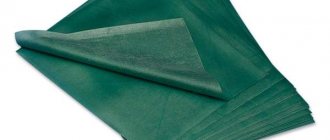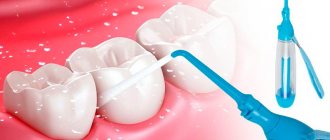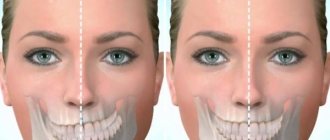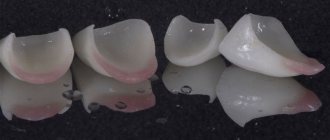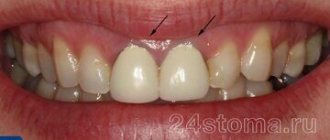What accessories do we need to install a rubber dam? In this article we will give a complete overview of what is needed for application and what helps make the procedure as simple as possible.
The following lists all the accessories needed to apply a rubber dam:
- Cofferdam clasps
- Forceps for applying rubber dam clasps (clamps)
- Rubber dam plate
- Rubber dam template and rubber dam stamp
- Perforator pliers
- Frames for rubber dam
- Latex thread (wedjets)
- Wipes for rubber dam
- Dental floss
- Water based lubricant
Let's look at each point separately.
Cofferdam clasps.
Clasps are necessary to hold the latex plate on the teeth. Each group of teeth has its own clasps.
As we can see, there are quite a lot of varieties of clasps. Each manufacturer gives recommendations on the use of a particular clasp on a specific tooth or group of teeth. But there are situations when it is better to use a clasp for another group of teeth, for example, on the upper third molars you can use clasps for premolars.
In addition to dividing into groups, there are clasps with and without wings:
Why is such a division needed? It is easier to install a latex plate on clasps with wings, and clasps without wings are indispensable when installing on second and third molars when the ramus of the lower jaw interferes, but more on this in the following articles.
Clamps
If you have all the tools, then sooner or later there will be a need for clamps, which have a known ability to disappear without a trace from time to time. And here Dentech tried their best, providing perhaps the widest range. The line includes clamps for molars, premolars, frontal teeth, baby teeth, all types of Brinker clamps, as well as separators. There are even clamps with a black coating, for comfortable work with microscopes and photo-video equipment for a doctor’s personal portfolio or conducting a master class. This will minimize the glare of bright operating light and increase contrast when working with a microscope. They are united by the high quality of Dentech Corporation and ease of use. All of them are made of special hardened stainless steel, which gives them an excellent spring effect and maximum resistance to corrosion. For better fixation on the tooth, the cheeks of the clamps are sharpened using special equipment. To guarantee high elasticity and long service life, each batch of products undergoes strength testing.
You can also purchase sets of 12 rubber dam running clamps. There is a set of 8 clamps for baby teeth, and there is a special set in which the clamps are coated with a patented oxide layer.
Rubber dam plate.
Standard plates are divided by thickness into:
- thin (thin) 0.13-0.18 mm - the thinnest rubber dam, the easier it is to apply, the faster it breaks and the tightness of its fit is not as good as that of a thicker one
- medium (medium) 0.18-0.23 mm – it is most suitable for use, as it is especially easy to handle, also convenient for pulling the rubber dam and, of course, for conservative treatment
- thick (heavy) 0.23-0.29 mm – thanks to its use, good gum retraction is achieved. In addition, it practically does not tear
- extra thick (xheavy) 0.29-0.34 mm - does not tear under extreme conditions and allows for maximum gum retraction, but at the same time it is very difficult to adapt
- thick special (spheavy) 0.34-0.39 mm - this rubber dam is applied only in cases where it is absolutely necessary to achieve special tissue protection.
FIT in rubber dam technology
FIT in rubber dam technology
Main characteristics and practical application of rubber dam.
Content:
Preface
- Fit in rubber dam technique
- The meaning and purpose of using a rubber dam
- Benefits for the treatment process
- Protection
- Making your work easier
- Disadvantages of rubber dam
- Important Quotes
Cofferdam products and their properties
- Rubber dam colors and quality properties (thickness)
- Five types of rubber dam by quality (thickness)
Rubber dam template for marking hole locations
- Rubberdam stamp
- Perforator-forceps for rubber dam
- Punching pliers for Fit
- Holes
- Cofferdam clasps
- Cofferdam
- interdental wedges
- latex threads
- wipes for rubber dam
- dental silk
- Heidemann spatula
Isolation from moisture in the area of the anterior teeth of the upper jaw
Preface
The safety aspect and the desire for optimal results in dental treatment using adhesive techniques, as well as in endodontics, are the basis for the use of rubber dams in dental practice. Rubber dam is a conditio sine gua non when fixing ceramic and composite inlays, gold inlays, composite fillings in the area of lateral teeth, as well as adhesive bridges. For reasons of hygiene for medical personnel and the patient, to protect the patient's oral mucosa from the irritating effects of chemical substances during root canal irrigation and whitening techniques, for gum retraction and to protect the soft tissues of the cheeks and lips, a dental dam should also be recommended. The rational use of a rubber dam also provides time savings, easier work, and a sufficient overview of the entire working area. Every dentist is familiar with a rubber dam, and the techniques for working with it must be mastered during the training process. True, in Germany, rubber dam is systematically used by 5-15% of dentists. In countries such as the USA, Switzerland and Scandinavian countries, rubber dams are used 5-7 times more often. The arguments put forward by German dentists as reasons for abandoning rubber dam are the time required for application and complex application. JKJngle described this argument as follows: “The biggest waste of time when using a rubber dam is convincing colleagues of its advantages and reliability.” The reasons lie largely in insufficient knowledge, as well as insufficient skills in the technique of applying a rubber dam. A rubber dam is a simple but effective aid that should help and not burden. The benefits of its use should outweigh the additional costs. The problem is to minimize the patient's time spent on rubber dam application. This is only possible by using the simple rubberdam techniques described below and constant training. For this purpose, appropriate courses and information materials are offered. Hager-Werken organizes courses on the rubber dam technique, has created a video film and published an information brochure about the rubber dam, which undoubtedly contributes to the further spread of the absolute isolation method. After a thorough revision of the 1st edition, the second brochure about fit-cofferdam was published. Starting with a historical perspective, it provides advantages and disadvantages and describes the components of a rubber dam set. The individual main variants of the rubber dam application technique are covered in detail and in a systematic manner. The description is supplemented with illustrative material. Thanks to its accessible presentation and good illustrations, the information brochure makes a very valuable contribution to the widespread and rapid dissemination of rubber dam technology.
Prof. Dr. Dental Medicine Eckhard Beetke
Dental Clinic of the University of Rostock
Course of cariesology and endodontics
Fit in rubber dam technique
Inventor of rubber dam.
In 1883, Dr. La Roche (France) stated that he had been using rubber dam since 1857, so he is considered the first inventor of this technique, despite the fact that Sanford Christi Barnym (1836-1885) - New York dentist - 03/15 .1864 was the first to use a rubber dam. Already in June 1864, at a meeting of the Society of Dentists in New York, he gave a demonstration of the use of a rubber dam in front of his colleagues. In August 1864 the first message was published. And already in 1867, the rubber dam technique became widespread.
The meaning and purpose of using a rubber dam
Benefits for physician and staff
Protection
- from ingestion
- from aspiration
- Avoiding damage to the mucous membrane by rinsing or
- disinfectants
- Protecting doctors and staff from infection
- Retraction of soft tissues (gums, lips, cheeks, tongue)
Making your work easier
- The working area remains dry
- The working area is disinfected for a long time
- Good review
- Sterile way of working
- Time gain is about 20%
- Mouth is constantly open
- Discussion with patient is interrupted
- No need to rinse your mouth
- No need to replace cotton rolls
For the patient, the greatest benefit is comfort, as he feels that the treatment is taking place outside the mouth. In this case, the feeling of overdried mucous membrane does not occur to a greater extent than with intensive use of a saliva ejector or cotton rolls. The same applies to the feeling of discomfort when supporting the doctor’s fingers. Irritation from choking and the gag reflex is also reduced. Thanks to the isolation, the contents of the oral cavity remain normal and the patient can swallow and breathe.
Disadvantages of rubber dam
- Loss of axial landmarks when preparing the entrance to the tooth cavity
- Possible injury to the interdental papilla
- Greater requirements for radiography
- Possible allergies (help: use silicone sheets, Roeko)
Important Quotes
“The biggest waste of time when using a rubber dam is convincing colleagues of its advantages and reliability” (JI Ingle)
“With skill, in a typical treatment case it is possible to apply a rubber dam in about 1 minute (maximum two minutes)” (JIIngle)
What and why rubber dam?
GVBlack (1908) answered this question more briefly and more accurately than anyone else. He wrote: “The rubber dam serves to keep the surgical field when working on teeth clean, dry and, if necessary, aseptic. The latter is especially desirable in root canal treatment. (G.V. Black 1908)
Cofferdam products and their properties
Cofferdam - a plate made of natural latex goes on sale in a roll or in the form of a napkin measuring 15x15 cm. Cofferdam has very high elasticity, which is necessary for its use. Unfortunately, its optimal properties are not unlimited (about 9 months), then it deteriorates, which means: it becomes brittle, due to which it breaks very quickly and does not fit tightly enough. If latex is placed in a refrigerator or even in a very cool box, it can retain its properties for a longer time (about 1 year when stored as described).
Rubber dam colors and quality properties (thickness).
Colors:
- light beige : due to its transparency, it is used mainly in endodontic treatment. It is not advisable to use when working with composites (poor image of contours)
- brown or dark gray : good color contrast, eliminates light reflection
- green : pleasant, friendly, soothing color tone produces good contour color contrast, no iris effect under fluorescent light (elimination/no reflection of light), smells like mint, making it very pleasant for patients
Five varieties of latex rubber dam sheets by quality (thickness)
- thin (thin) 0.13-0.18 mm - the thinnest rubber dam, the easier it is to apply, the faster it breaks and the tightness of its fit is not as good as that of a thicker one
- medium (medium) 0.18-0.23 mm – it is most suitable for use, as it is especially easy to handle, also convenient for pulling the rubber dam and, of course, for conservative treatment
- thick (heavy) 0.23-0.29 mm – thanks to its use, good gum retraction is achieved. In addition, it practically does not tear
- extra thick (xheavy) 0.29-0.34 mm - does not tear under extreme conditions and allows for maximum gum retraction, but at the same time it is very difficult to adapt
- thick special (spheavy) 0.34-0.39 mm - this rubber dam is applied only in cases where it is absolutely necessary to achieve special tissue protection.
The rubber dam thickness values intersect, the largest measurement value according to the specification is indicated, which is also the smallest value for the next higher specification.
The rubber dam user usually “feels” these small differences in measurement.
When performing a composite restoration under a rubber dam, it is necessary to determine the color before applying it, since the surface of isolated teeth dries very quickly and to a large extent, which makes it impossible to select the correct color.
During the first steps of working with a rubber dam, you can first use a thin rubber dam, taking into account the properties given in the description of the material. Over time, as you acquire more advanced skills, it is recommended to switch to working with a rubber dam of greater thickness. In everyday practice, two types of rubber dam are usually used. First, you should move from thin to medium and thick, later - to extra thick.
Important
The rubber dam has a smooth and powdered surface. The smooth surface is always adjacent to the surface of the patient’s oral cavity, and the powdered one is thus facing the doctor. This rule must be observed for two reasons: - a smooth surface glides more easily over the surface of the isolated teeth (an advantage for the person applying the rubber dam) and - when the rubber dam comes into contact with the tongue, no rice or corn flour remains on the latter (comfort for the patient)
Rubber dam template for marking hole locations
It is made of white vinyl and makes it possible to accurately mark the position of the tooth on the rubber dam, with the rubber dam being applied with its smooth side to the template and marked on the powdered surface of the application with a pencil (so that the marking does not go to the reverse side). The advantage of using a template is that only the position of the teeth to be isolated is noted. It follows that when applying a rubber dam it is easier to navigate in the oral cavity, since there are no other marks on its surface.
Rubberdam stamp
With its help, additional arches can be applied to the surface of the rubber dam, onto which, if necessary, it is easy to apply standard tooth positions.
Punching forceps for rubber dam
They are equipped with a disk with 5 or 6 through holes of different sizes, which makes it always possible to obtain holes of the correct shape in the rubber dam.
Purpose of holes in the ainsworth hammer drill:
- Hole No. 5 (largest) – recommended for clasp teeth (at the end of the dental arch)
- Hole No. 4 (large) – universal for molars
- Hole No. 3 (medium) – for canines and premolars of the upper and lower jaw
- Hole No. 2 (small) – for the front teeth of the upper jaw
- Hole No. 1 (smallest) – for very thin lower front teeth
Varying the hole sizes according to the above diagram ensures an absolutely tight fit of the rubber dam, preventing the penetration of moisture to the working surface of the tooth.
Punching tongs for fit
Using a fit-perforator, you can in any case get a smooth, clean hole in the rubber dam. The movable shield-stamp always covers the entire cutting edge at the same time and thus forms a hole without breaks.
Hole
To obtain a straight hole, the rubber dam plate must be pulled between the thumb and ring finger, as well as the index and middle fingers of the left hand (elimination of folds and therefore no unwanted additional perforation). Only now bring the plate with the holes of the intact sharp forceps under the rubber dam, the forceps are closed and the spike is pressed into the selected hole in the disk, so as to obtain an absolutely round hole. If, upon examination of the hole, tears and gaps in the shape of teeth are found, this indicates that when trying to pull the rubber dam over the teeth in places where the holes are incomplete, it breaks. If the perforation is absolutely round, then when the rubber dam is stretched, it can be applied easily and without tearing
Cofferdam clasps
There are fundamentally two main forms of clasps. They correspond to various methods of applying rubber dam. There are wingless clasps and clasps with wings.
Wingless clasps
Their sides are short and rounded. When using this type of clasp, first a clasp is placed on the tooth, then a rubber dam is applied, and finally frames are placed. The letter W (wingless) before the number means a clasp without wings.
Clasp with wings
Their sides have wings protruding forward. The wings are inserted into the hole in the rubber dam and then the clasp along with it is placed on the tooth.
- central contact point
- wing
- perforation hand
- side panel of the front clasp
- wing clipping
- contact point
For methodological and practical reasons, we will consider in more detail the widely used individual clasps.
- No. 14A - especially recommended for incompletely erupted, underdeveloped or incompletely formed molars. The clasp is fixed on the teeth thanks to contact at 4 points, inclined downwards on the sides. A reduced arc distinguishes this clasp. No. 14 corresponds to this form, although larger ones are also used.
- No. 7 is an excellent clasp for lower molars. Damage to the gums is eliminated due to the flat shape of the sides.
- No. 2 is a standard clasp for large premolars, mainly in the lower jaw. Its flat sides prevent damage to the gums.
- No. 9 is a universal clasp with a double arch and wings for labial cavities in anterior teeth and premolars (endodontic treatment).
- No. 00 – for very small premolars and incisors of the upper and lower jaw. They differ due to their very high arch and shortened sides.
- No. 5 is a universal clasp for large molars of the upper jaw, especially for rounded teeth. The clasp fits well to the gingival margin with its deepened sides, which eliminates rotation.
- No. 8A – small molars of the upper and lower jaws, which have not fully erupted or are not fully formed. To avoid damaging the tissue, 4 spikes are inserted under the gum. Thanks to the downward sloping sides, it is possible to apply a rubber dam below the gingival margin.
- No. 212 – cervical clasp (=tissue retraction) for cervical cavities (class 5 carious defects) in all teeth. For this indication, an extra-thick rubber dam is used to achieve the greatest possible gingival retraction. It is important that the hole for the tooth to be restored is inserted more cervically (about 2 mm) in contrast to the adjacent teeth. It is also recommended to make this hole one number larger than the others. To stabilize the clasp, KERR mass or stamping compound is used.
- No. 214 – Hatch cervical clasp. Two large movable arches form a small sidewall and are applied vestibularly or labially, so that the gum is retracted into the desired position, the screw is tightened and the clasp is fixed. The large sidewall is motionless and is located palatally or lingually.
Lip clasps – clasps with double arches
For endodontics, it is important in all cases to isolate only the tooth being treated. For single-rooted teeth, the double-arch clasps shown here are available.
- No. 210 – intended for labial cavities in anterior teeth, also in premolars and second molars of the lower jaw.
- No. 211 is an exceptional clasp for labial cavities in the front teeth of the lower jaw.
Quick orientation in clasps
Clasp Teeth Group
- No. 9, 214 (Hatch) Frontal teeth
- (0, 00, 210, 211)
- No. 2, 1 (0, 00) Premolars
- No. 7, 8, 8A, 14A Molars
- No. 7 Universal for lower molars
- No. 8 Universal for upper molars
- No. 8A Small molars, not fully erupted
- No. 14A Large molars, not fully erupted, deeply affected or partially impacted
Nippers for rubber dam clasps
The pliers for rubber dam clasps grasp each clasp arch in the correct position, without tipping over, thanks to retention. They also make it possible to adapt the clasp to the tooth. The forceps thus serve for spreading and applying the clasp, as well as for its removal.
Frames for rubber dam
To maintain the tension of the rubber dam, instead of special weights, frames are now used, which, thanks to separately rationally located, well-grasping spikes, very quickly and successfully ensure fixation of the rubber dam. Frames for rubber dams today are made of metal and plastic. The middle picture shows valve frames made of plastic, which greatly facilitate access to the working area and are therefore particularly suitable for endodontic treatment.
Frames for Fit rubber dam by Young
U-shaped frames for rubber dam, stainless and flexible, with small, rationally located, well-gripping cylindrical spikes for fixing the rubber.
Valve frames for Fit by Saveur
Valve frames designed for endodontics are made of autoclavable plastic (X-ray permeable) and are equipped with a central hinge. They are used as regular rubber dam frames. At the same time, it is possible to close half so as to achieve a good position for the control X-ray examination. The advantage of the frame is its good orientation, it is always directed towards the chin.
Important accessories!
Interdental wedges
For fixation of matrices, as well as for fixation of rubber dam in the patient’s oral cavity. Wedges are made from maple (wood) or nylon (plastic). Excellent adaptation to the tooth is possible thanks to the anatomically ideal wedge shape. In order to press the tissues and rubber dam in the apical direction, as well as to prevent rupture of the rubber dam and, as a consequence, its wrapping around the bur, especially with defects spreading along the neck of the tooth, maple wedges are placed approximally.
Latex thread (wedjets)
This rubber dam stabilization cord is a single use natural rubber product and is available in two sizes, 2.14 m long:
- yellow – thin
- orange - thick
Various manufacturers offer basic sets of basic accessories. However, all individual parts and special clasps, as well as accessories, can be purchased separately.
Wipes for rubber dam
Indicated for use in patients with latex allergies. (This is advisable for the doctor and very comfortable for the patient if the rubber dam napkins, especially during long-term treatment, are immovable. The rubber dam is then put on through the hole in the dam and stretched over the frames. It absorbs saliva, water and sweat.
Dental silk
Silk ranks first as a proven means for cleaning interdental spaces. It is also an outstanding aid when placing rubber dams on hard-to-reach contact surfaces. A dental silk ligature is often very helpful in securing the dental dam to the tooth (especially primary molars and primary canines). The ligatures should be secured buccally using a surgical knot. It is advisable to use a long ligature, as it facilitates manipulation in depth and removal. If a problem arises that the clasp does not fit well, damages the mucous membrane or leakage is observed, then a single or double ligature of dental silk is secured, or in most cases, a loop of dental silk, which is passed through the contact point and remains there. The weak tension of the rubber dam is leveled by introducing silk into the interdental space, thereby achieving excellent fixation.
Heidemann spatula
Indispensable for short-term separation of contact points, as well as for adapting the rubber dam around the neck of the tooth (tucking). Thanks to the additional constant air flow in the direction of the sulcus, tucking can be easily done by hand.
Examples of using rubber dam for various indications
Saliva isolation in endodontics = isolation of an individual tooth using a rubber dam and a rubber dam clasp, which are applied to the isolated tooth at the same time, i.e. a suitable clasp with wings is used, for example, for endodontic isolation of the upper frontal teeth - clasp No. 210. In this case, one wing is inserted into the perforation from the side of the powdered surface. The perforation expands slightly so that the second wing can be inserted and the clasp is located on the powdered surface, and the wings on the opposite smooth surface. The perforation in the rubber dam is opened with wings so that you can clearly see the tooth on which the rubber dam needs to be applied. The clasp is applied to some extent under visual control. In practice, this means that the clasp fixed in the rubber dam is lifted with clasp pliers.
Attention ! Clasp pliers act like telescopic pliers.
Thus, the jaws open with pressure and, accordingly, close with fixation. In this case, the clasp can be applied to the tooth without any problems and can also be removed after treatment. In the case of endodontic isolation in the frontal part of the upper jaw, it is recommended to apply the clasp vestibularly under the gingival margin, and from the palatal surface to use a powerful tooth retention point in the form of a tubercle. Move the clasp forceps to the side, apply a rubber dam and clasp.
Clasp forceps are applied and the clasp with rubber dam is inserted into the oral cavity in the working direction. In this case, the corresponding tooth is visible between the sides of the clasp, the clasp is opened and then applied to the tooth.
Using a Heidemann spatula, you can very easily position the rubber dam on the edge of the arched side, move it to the sides from the wings of the clasp, then the rubber dam slides under the sides of the clasp and rests on the tooth.
To tension the rubber dam, it is pulled through the hole in the Fit valve frame and fixed to it using conveniently located retaining pins. If gingival fluid protrudes onto the surface of the rubber dam, this indicates that it is not slipping sufficiently under the sides of the clasp. To eliminate this drawback, a wired dental silk thread about 30 cm long is inserted from the palatal side behind the clasp. Both ends remain under the clasp arches and slide into the corresponding interdental spaces. Now the silk is brought out vestibularly under the corresponding sidewall of the clasp, the ends of the thread are crossed and carefully fixed. The rubber dam lies entirely on the gingival margin, so that absolute isolation from moisture is achieved. The ends of the threads are cut off or completely removed. Appropriate endodontic treatment can begin after the final placement of the rubber dam, and when the canal is opened under water cooling, the assistant physician is advised to remove the resulting spray mist using an aspirator, using a wide and intact pelot. (Caution: The formation of a sharp edge on the pelota can lead to rupture of the rubber dam.) The patient can swallow saliva almost normally. The treatment lasts so long that a control X-ray examination can be carried out, this is possible thanks to the Fit valve frames.
An emmenix film holder or an arterial clamp is offered as an aid (a thin crown clipper P is also very good).
As a rule, in the case of endodontic treatment, complete isolation of the tooth from moisture is necessary. Therefore, endodontic cases are especially suitable for making friends with a rubber dam. At the end of the treatment visit, the clasp is first clamped again in the clasp forceps. This can be done most quickly and easily if clasp forceps with retention pins are first inserted into the visible perforation of the clasp, the forceps are opened slightly and at the same time rotated over the tooth so that the second retention pin can be inserted into the second perforation of the clasp. Clasp forceps are compressed, due to which the clasp opens and is easily removed from the tooth. When isolating one tooth, the patient can be told that the rubber dam and frames are removed during tightening. This can be dealt with gently and without injections if the right thumb is placed vestibularly under the rubber dam and frame, the right index finger under the cutting edge of the tooth, put on the rubber dam, the middle finger lies on the rubber dam, at the same time the ring finger and little finger are bent under the frame. Now the frame is removed in front of the patient’s face so that the rubber dam can be removed from the cutting edge without injections.
Isolation from moisture in the area of the anterior teeth of the upper jaw
In order not to narrow the visible and working field, it is recommended to apply a rubber dam during work in the frontal area of the upper jaw in such a way as to isolate teeth 13-24. In addition, in this case, the medical assistant, in his free time from seeing patients, must prepare the rubber dam plate (mark the position of the teeth and perform perforations) and place it in the refrigerator. The one-step technique for the above indication leads the user to particularly quickly achieve the desired goal - absolute isolation from moisture, therefore the rubber dam, rubber dam clasp and frames are applied simultaneously. Take a rubber dam plate perforated from 13 to 24 (powdered side up) in your left hand, place a large metal frame for the rubber dam on top, 1.5 cm from the left edge, while the upper ends of the frame should be at the level of the upper edge. The rubber dam and the frame are thus held in the left hand, then the rubber dam is pulled with the right hand so as to fix it on the cylindrical holding spikes of the frame. The right hand now holds the rubber dam and frame, while with the left hand the rubber dam is put on the left side and is also fixed to the holding pins. Excess rubber dam on the left, right, and bottom edges can also be folded into a small pocket. It can be useful during preparation to collect water and also to catch parts of fillings. The fixed plate should then be folded on the longer side so that that side of the frame is enclosed by the rubber dam. The hand holding the folded side wraps around the frame at the bottom corner so that the fold cannot roll back. The rubber dam and frame are in this hand only. With your free hand, grab the end to be put on further and pull it high enough to fix this side on the upper edge of the frame. After this, the listed steps are carried out on the opposite side. Since the pocket resulting from strong tension can limit the field of view, the tip of the rubber dam is grabbed in the middle of its upper edge and fixed to a cylindrical retaining spike located in the middle of the transverse fastening. Now for tooth 24, a suitable clasp with wings for premolars is taken (for example No. 2, 2A, 209 or 206), fixed in the clasp forceps and inserted with its medial wings into the fourth perforation hole so that its distal arch faces distally (for the initial to facilitate orientation, you can also mark 25. The arch is located above this auxiliary line, so that when brought into the patient's mouth everything is in order). The clasp is applied on the buccal side at the gingival margin. under light pressure from the working hand on the forceps, the clasp easily opens, is put on the occlusal surface and the equator of the tooth, after the pressure stops, the forceps are fixed and the clasp is carefully applied also palatally. Clasp tooth 24 is now located outside the rubber dam, clasp forceps are located on both sides of it. Both hands of the person applying the rubber dam pull the latter so that it can be installed vertically in the interdental space (like a separating plate). Now, through the perforation, pull the rubber dam over the corner and cutting edge and insert it into the next interdental space. Again, install the latex with the next perforation hole as vertically as possible in the interdental space and push it through the perforation onto the corner and cutting edge. And repeat this until all the isolated teeth are outside the rubber dam. In area 13, the rubber dam is fixed using a dental wedge, gutta-percha thread, a loop of dental silk, a ligature, or a clasp is also applied to 13. If gingival fluid still leaks out and the teeth are therefore moisturized, it is necessary to additionally add a so-called inversion at the last stage. This means that the edges of the rubber dam are tucked around the neck of the tooth. Firstly, they can thus guarantee absolute tightness against moisture. The doctor inverts the edge of the curved side of the Heidemann spatula so that this side of the instrument is brought under the perforation and carefully applied to the gum. At the same time, the assistant directs a uniform flow of air into the gingival groove area. If the doctor now lightly presses the rubber dam against the upper lip/gum area using the index and middle fingers of the left hand, using the inflation effect, and at the same time removes the spatula again, the edge of the rubber dam will easily bend. If the doctor prefers to carry out the inversion using dental silk, he stretches a wired thread of dental silk about 30-40 cm long on both sides in the interdental space, so that it lies well at the gingival margin on the palatal side. Both ends of the thread now cross vestibularly and are easily pulled. At the same time, the rubber dam is tucked in. During inversion, the powdered side of the rubber dam lies on the corresponding tooth. If the wings of the clasp 24 are now brought to the surface of the rubber dam, absolute isolation is achieved. A small plugger or Heidemann spatula, with its curved side this time, is placed between the latex and the clasp. The tool easily turns to the left, then to the right between the fingers, thanks to which the rubber dam, as if by magic, finds its way under the clasp.
- applying the clasp together with the frame
- rubber dam gets dressed
- the clasp is brought to the surface of the rubber dam
- inversion (only possible using threads.
We have presented the main stages of the work... For information on the features of using some methods of applying a rubber dam, read the article Features of using a
Silvia Jeiger Dutsburg, March 1997.
Perforator pliers.
They come in different designs, but the function is the same - to make a hole of a certain diameter in the latex plate.
Each such tool has a rotating part that adjusts the size of the hole.
- Hole No. 5 (largest) – recommended for clasp teeth (at the end of the dental arch)
- Hole No. 4 (large) – universal for molars
- Hole No. 3 (medium) – for canines and premolars of the upper and lower jaw
- Hole No. 2 (small) – for the front teeth of the upper jaw
- Hole No. 1 (smallest) – for very thin lower front teeth.
The most common methods of applying a rubber dam
Arc technique.
In this technique, the clamp is first placed on the tooth, and then the latex is pulled through the wings.
Wing technique.
This technique involves inserting both wings of a clamp into the hole in the rubber dam. After installing the latex with the clamp, a frame is put on the latex.
Method III - rubber dam first.
A clamp is inserted into the latex hole, then the latex is pulled onto the frame and the clamp is grabbed with forceps. A rubber dam on a frame is placed in the mouth, pulled over the tooth and then secured with a clamp.
Method IV - clamps first.
Using this technique, a clamp is first placed on the tooth. As with method III, you first need to prepare a clamp with forceps and a rubber dam on the frame. Only the sequence in which they are placed in the oral cavity changes.
The rubber dam greatly facilitates manipulations and increases their effectiveness. The use of a rubber dam provides greater comfort for both the dentist and the patient, and allows for calm and confident treatment.
Art Dental dentistry uses the most modern technologies!
Water-based lubricant.
Necessary for lubricating the edges of the holes in the latex plate for better insertion into the interdental spaces. For example Denta-glyde.
Of course, you will not need all the accessories; for example, you can do without latex thread or lubricant, it all depends on the system used, the thickness of the latex, etc.
Now that everything is ready for use, you need to know how to apply a rubber dam. Let's study the first method of applying a rubber dam, more on that in the next article.
Did you like the article? Then leave your email so you don't miss anything interesting.
Frame for rubber dam.
The latex is stretched using a special frame. Frames are available in metal and plastic. Plastic frames transmit x-rays and can therefore be used in dental treatments that require x-ray control.
There are currently several frame options:
- Universal U-shaped frame
- Nygaard-Ostby frame
- Young's U-shaped frame
- Oval frame Savo
Punch for rubber.
A punch is used to form holes in rubber plates.
Rubber dam clamps.
When the rubber dam was first invented, wooden wedges and floss were used to secure it. Later, various clasps appeared that were designed to secure the rubber dam to each tooth. Currently, steel clamps are the most common, although synthetic plastic clamps are also available. The clamp must have point contact with the tooth surface. The rubber dam clamps are secured with special forceps.
